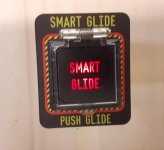Dad's RV-10
Well Known Member
For those with old school oil pressure annunciator lights, what PSI switch should be used to reliably indicate an engine that is no longer running? How many PSI does a typical 320/360/375 produce with a windmilling prop?
I've ordered a "Smart Glide" switch with a backlit LED annunciation. In a perfect world, it would be configured to illuminate "Smart Glide" when the engine is no longer running. The switch LED illumination would function no differently than a typical low oil pressure annunciator light.
I've ordered a "Smart Glide" switch with a backlit LED annunciation. In a perfect world, it would be configured to illuminate "Smart Glide" when the engine is no longer running. The switch LED illumination would function no differently than a typical low oil pressure annunciator light.






